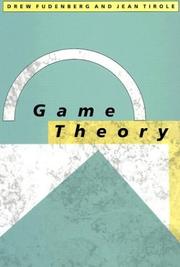| Listing 1 - 2 of 2 |
Sort by
|
Book
ISBN: 9781503605015 9781503613072 1503613070 1503605019 1503613089 9781503613089 Year: 2020 Publisher: Stanford, California : Stanford University Press,
Abstract | Keywords | Export | Availability | Bookmark
 Loading...
Loading...Choose an application
- Reference Manager
- EndNote
- RefWorks (Direct export to RefWorks)
Today, social media offers an alternative broadcast and communication medium for nonprofit advocacy organizations. At the same time, social media ushers in a "noisy" information era that renders it more difficult for nonprofits to make their voices heard. This book seeks to unpack the prevalence, mechanisms, and ramifications of a new model for nonprofit advocacy in a social media age. The keyword for this new model is attention. Advocacy always starts with attention: when an organization speaks out on a cause, it must ensure that it has an audience and that its voice is heard by that audience; it must ensure that current and potential supporters are paying attention to what it has to say before expecting more tangible outcomes. Yet the organization must also ensure that advocacy does not end with attention: attention should serve as a springboard to something greater. The authors elaborate how attention fits into contemporary organizations' advocacy work and explain the key features of social media that are driving the quest for attention. Developing conceptual models, they explain why some organizations and messages gain attention while others do not. Lastly, the book explores how organizations are weaving together online and offline efforts to deliver strategic advocacy outcomes.
Nonprofit organizations --- Social media --- Political activity --- Social media. --- Associations sans but lucratif --- Médias sociaux --- Political activity. --- Activité politique. --- Médias sociaux. --- Nonprofit organizations - Political activity --- User-generated media --- Communication --- User-generated content --- Advocacy. --- Attention. --- Big Data. --- Data Science. --- Impact. --- Machine Learning. --- Nonprofit Organizations. --- Online-Offline. --- Social Media Capital. --- Social Media. --- Twitter.

ISBN: 9780262016148 0262016141 0262061414 9780262061414 Year: 1991 Publisher: Cambridge, Mass. : MIT Press,
Abstract | Keywords | Export | Availability | Bookmark
 Loading...
Loading...Choose an application
- Reference Manager
- EndNote
- RefWorks (Direct export to RefWorks)
Digital artifacts from iPads to databases pervade our lives, and the design decisions that shape them affect how we think, act, communicate, and understand the world. But the pace of change has been so rapid that technical innovation is outstripping design. Interactors are often mystified and frustrated by their enticing but confusing new devices; meanwhile, product design teams struggle to articulate shared and enduring design goals. With Inventing the Medium, Janet Murray provides a unified vocabulary and a common methodology for the design of digital objects and environments. It will be an essential guide for both students and practitioners in this evolving field. Murray explains that innovative interaction designers should think of all objects made with bits--whether games or Web pages, robots or the latest killer apps--as belonging to a single new medium: the digital medium. Designers can speed the process of useful and lasting innovation by focusing on the collective cultural task of inventing this new medium. Exploring strategies for maximizing the expressive power of digital artifacts, Murray identifies and examines four representational affordances of digital environments that provide the core palette for designers across applications: computational procedures, user participation, navigable space, and encyclopedic capacity. Each chapter includes a set of Design Explorations--creative exercises for students and thought experiments for practitioners--that allow readers to apply the ideas in the chapter to particular design problems. Inventing the Medium also provides more than 200 illustrations of specific design strategies drawn from multiple genres and platforms and a glossary of design concepts.
Human-computer interaction --- Digital media --- Social media --- Intercultural communication --- Design --- Human-computer interaction. --- Intercultural communication. --- Interaction homme-machine (Informatique) --- Communication interculturelle --- Design. --- Médias numériques --- Conception --- Médias numériques --- #SBIB:309H1720 --- Cross-cultural communication --- Communication --- Culture --- Cross-cultural orientation --- Cultural competence --- Multilingual communication --- Technical assistance --- User-generated media --- User-generated content --- Electronic media --- New media (Digital media) --- Mass media --- Digital communications --- Online journalism --- Computer-human interaction --- Human factors in computing systems --- Interaction, Human-computer --- Human engineering --- User-centered system design --- User interfaces (Computer systems) --- Informatiekunde, informatie management --- Anthropological aspects --- Digital media - Design --- Social media - Design --- Economics, Mathematical --- Game theory --- mathematische modellen, toegepast op economie --- speltheorieën --- 000.1 --- 518.5 --- 330.105 --- Economics --- Mathematical economics --- Econometrics --- Mathematics --- 330.105 Wiskundige economie. Wiskundige methoden in de economie --- Wiskundige economie. Wiskundige methoden in de economie --- Games, Theory of --- Theory of games --- Mathematical models --- Algemene werken --- Operationeel onderzoek. Speltheorie --- Methodology --- 305.6 --- AA / International- internationaal --- Risicotheorie, speltheorie. Risicokapitaal. Beslissingsmodellen --- Théorie des jeux. --- Mathématiques économiques. --- Game theory. --- Economics, Mathematical. --- Operational research. Game theory --- Théorie des jeux --- Mathématiques économiques
| Listing 1 - 2 of 2 |
Sort by
|

 Search
Search Feedback
Feedback About
About Help
Help News
News